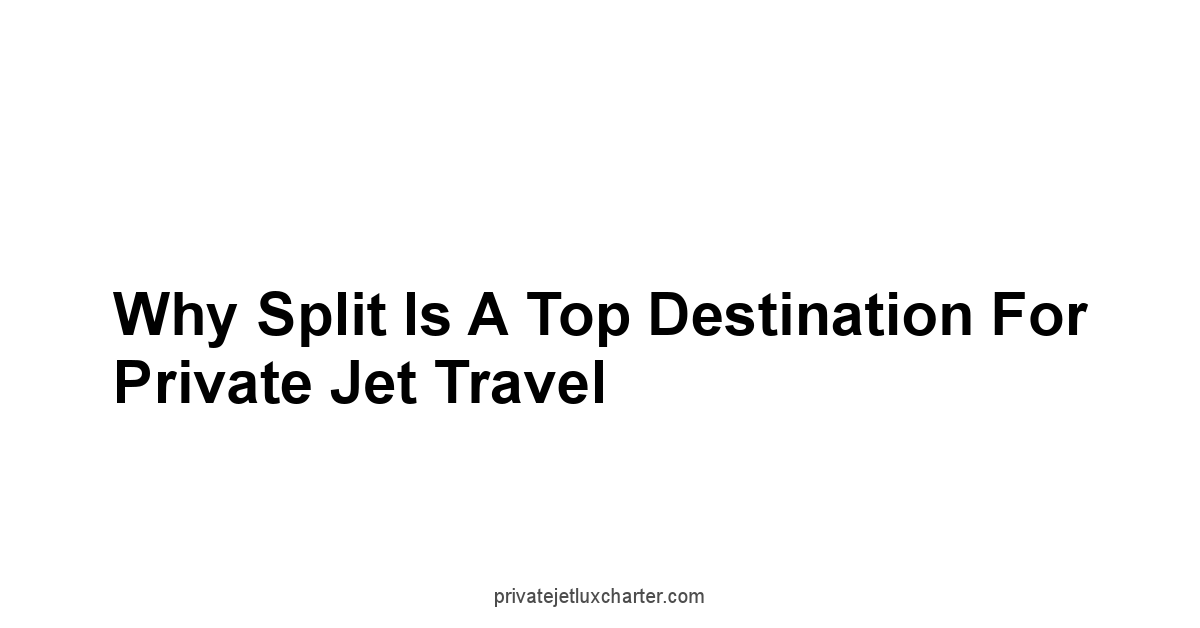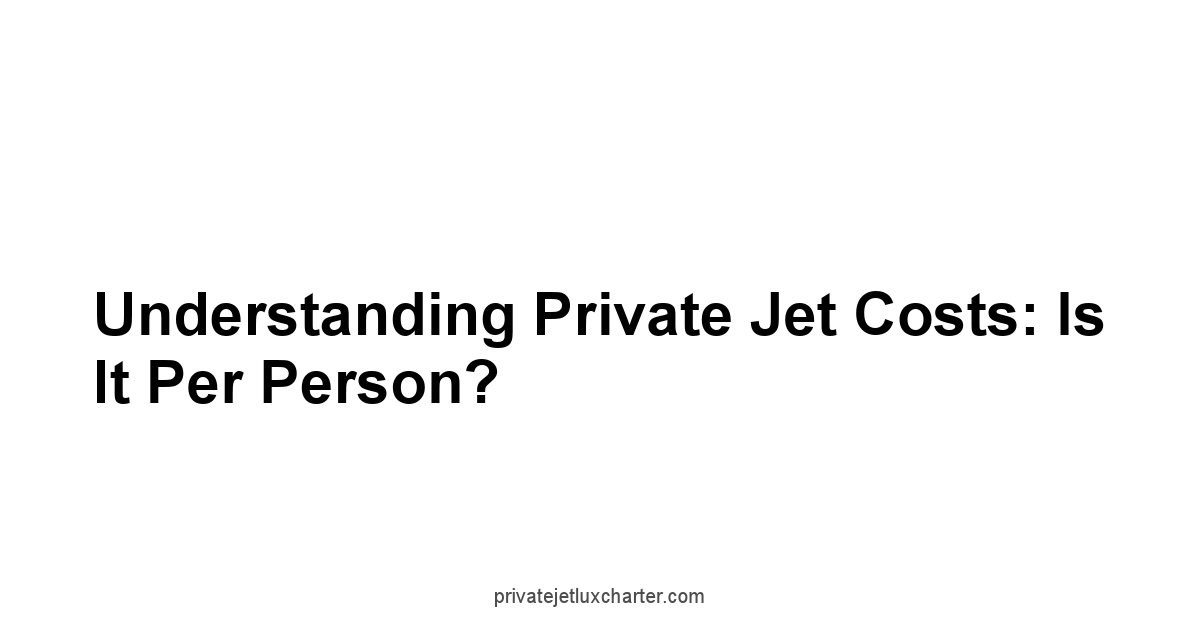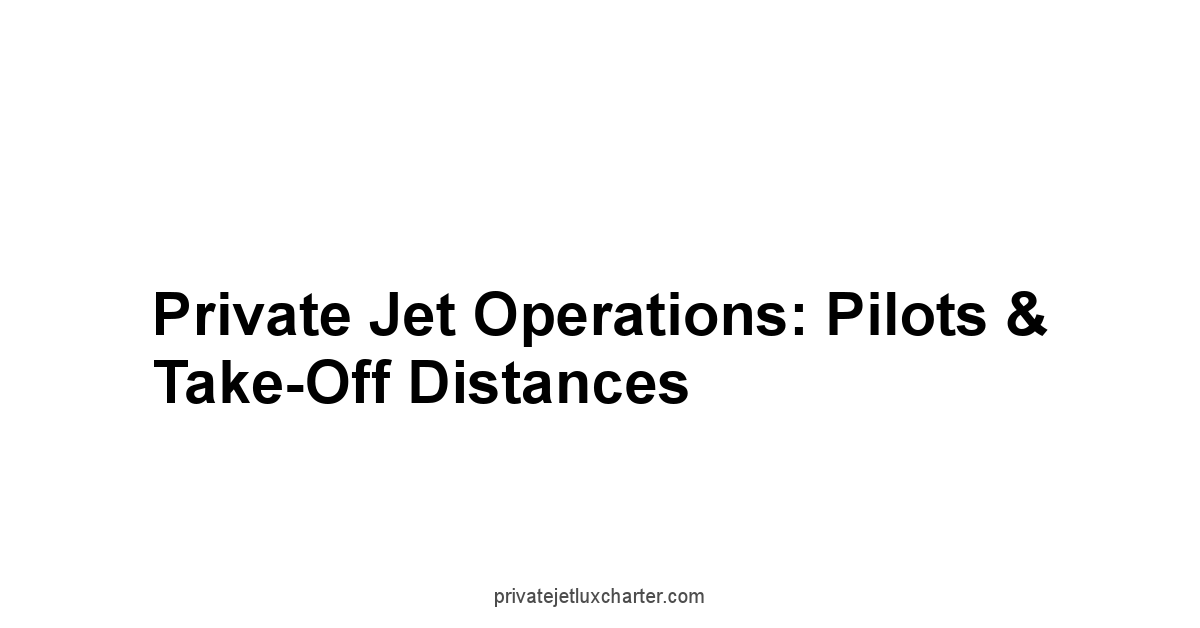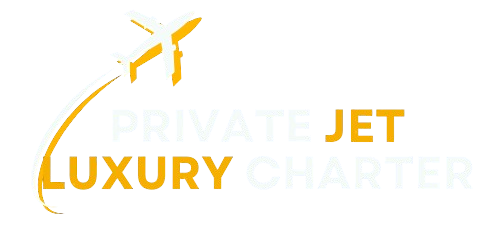Photo by Lucija Vukušić on Unsplash
If you’re looking to charter a private jet to Split, Croatia, you’ll find that it’s a fantastic way to experience the stunning Dalmatian coast with unmatched comfort and convenience.
The main airport for private jet travelers heading to this beautiful city is Split Airport SPU/LDSP, also known as Resnik Airport.
It’s conveniently located about 24 kilometers roughly 15 miles west of the city center, and it’s well-equipped for private aviation, even boasting VIP services and a separate area for private passengers.
To check out your options and start planning your luxurious trip, you can head over to privatejetluxcharter.com.
Book your private jet today—and let every mile be as extraordinary as the destination.
Why Split is a Top Destination for Private Jet Travel

Split has truly become a magnet for discerning travelers, and it’s easy to see why.
This Croatian gem blends ancient history with a vibrant modern lifestyle.
Imagine stepping off your private jet and within minutes being immersed in the majestic Diocletian’s Palace, a UNESCO World Heritage Site from the 4th century AD.
For those who love good food, the city’s newly renovated Riva Promenade is packed with local street food, coffee shops, and world-class wine, not to mention fresh seafood straight from the ocean.
The whole experience, from expedited security checks to private lounges at the airport, is designed for a seamless transition from the skies to the stunning Adriatic Sea.
Understanding Private Jet Costs: Is It Per Person?

One of the most common questions I get about private jets is, “Do private jets charge per person?” And it’s a fair question, especially since we’re all used to commercial airline tickets being priced individually.
Here’s the deal: private jets do not charge per person. Instead, the cost is for the entire aircraft, regardless of how many passengers are on board.
This means that if you’re traveling with a group, sharing the total cost can actually make private flying surprisingly economical on a per-person basis, sometimes even rivaling first-class commercial tickets.
Factors Influencing Private Jet Charter Costs
So, if it’s not per person, what does affect the price? A lot of things, actually. Think of it like renting a fancy car – the type of car, how long you have it, and where you pick it up and drop it off all play a role.
The main factors include:
Aircraft Type and Size: This is a big one. Different jets have different hourly rates. For example, a very light jet VLJ is great for short hops and might run you around $4,000 to $5,000 per hour, fitting 4-6 passengers.
A light jet, which can seat 6-8 passengers and fly a bit further, could be $5,500 to $7,000 per hour. Midsize jets are around $6,000 to $9,000 per hour, while heavy jets, designed for long-haul and accommodating 10-16 passengers, can be $10,000 to $15,000 per hour. Ultra long-range jets, the crème de la crème, start at $14,000 per hour.
Flight Distance and Duration: This one’s pretty straightforward – the longer you fly, the more it costs. Flight time is the primary driver of the total charter price.
A quick trip from London to Split might start around €12,000 to €21,500. For something from Paris to Dubrovnik which is similar in distance to Split, you might see prices from $18,600 to $31,700 for one-way on different jet types.
Crew and Additional Fees: Just like a commercial flight, there are other charges that pop up. These can include landing fees from $150 to $500 depending on the airport and aircraft, fuel surcharges which can add $600 to $900 per flight hour for larger jets, and crew overnight fees if your crew needs to stay in Split, typically $200 to $600 per person, per night.
You might also see ground transportation costs, international fees, and even de-icing charges in winter months.
Aircraft Availability and Empty Legs: Sometimes, a private jet flies empty to pick up passengers or return to its home base after a drop-off.
These are called “empty legs” and can offer significant discounts, sometimes up to 75% off the standard charter rate. Keep an eye out for these deals if your schedule is flexible!
Book your private jet today—and let every mile be as extraordinary as the destination.
Private Jet Capabilities: Long-Distance Travel and Beyond

When we talk about flying private, people often wonder how far these planes can really go.
Private jets are definitely designed for impressive range, allowing you to cover long distances without needing to stop as often as commercial flights, or even at all for transcontinental trips.
Best Private Jets for Long Distance Travel
For those really long journeys, you’ll be looking at specific types of jets.
Large cabin private jets typically offer a range of 4,000 to 7,500 nautical miles, which is perfect for international and long-haul travel.
Photo by Piotr on Unsplash
Book your private jet today—and let every mile be as extraordinary as the destination.
Some of the top contenders for longest range private jets include:
Bombardier Global 8000: This one is a champion, capable of flying 8,000 nautical miles about 14,816 km non-stop. It’s built for efficiency, speed Mach 0.94, and features luxurious living spaces.
Gulfstream G800 & G700: These are also strong contenders. The G800 boasts an 8,000 nautical mile range, while the G700 can hit about 7,750 nautical miles around 14,353 km and has the industry’s largest cabin.
Bombardier Global 7500: With a range of 7,700 nautical miles, this aircraft redefined ultra-long-range travel.
Dassault Falcon 8X: This tri-jet design offers about 6,450 nautical miles 11,945 km and is known for its ability to access airports with shorter runways.
These jets are built to connect major global hubs non-stop, making routes like New York to Hong Kong or Los Angeles to Sydney feasible without refueling.
Smaller jets, like light jets, might cover up to 3,000 nautical miles, while very light jets are usually good for up to 1,500 to 2,000 nautical miles.
Private Jet Flight Distances and Fuel Stops
The actual distance a private jet can fly before needing to refuel depends on several factors, including the type and size of the jet, the weight it’s carrying passengers, luggage, fuel, weather conditions like headwinds or tailwinds, and even the elevation of the airports.
On average, a private jet can fly for about five to six hours before needing a fuel stop, though some can go for 16 hours or more.
If a fuel stop is needed, it’s usually a quick one, often taking only about 30 minutes.
That’s a huge time-saver compared to connecting flights on commercial airlines.
Private Jet Operations: Pilots & Take-Off Distances

Flying a private jet isn’t just about the luxury interior.
There’s a whole world of operations behind the scenes, from the pilots to how much runway they need.
Do Private Jet Owners Have Their Own Pilots?
This is a really common question, and the answer is: it varies.
Many private jet owners do indeed have their own dedicated pilots on staff, especially if they fly frequently.
This gives them incredible flexibility and control over their travel schedule.
The cost of employing a pilot, when you look at the overall cost of owning and running a jet, is often considered negligible. These pilots aren’t just flying.
They’re handling pre-flight planning, fueling, catering checks, and all the ongoing paperwork and maintenance scheduling.
However, not all owners go this route.
Some choose to use private jet management companies.
These companies handle everything from pilot recruitment, training, and management to aircraft maintenance and storage.
This is a great hybrid approach, giving owners the benefits of a professional flight crew without the administrative headaches.
For those who don’t own a jet but still want the private experience, charter services are the way to go.
In this case, the pilots are provided by the charter company, essentially like a private taxi service for the skies.
Generally, most private jets, especially those for hire, require a two-pilot crew – a captain and a first officer – for safety and to share the workload, especially on longer flights.
Even if a jet is certified for single-pilot operation, many owner-pilots will still use a second pilot for increased safety.
To become a private jet pilot, it’s a rigorous path, usually requiring a Private Pilot License PPL, Instrument Rating, Commercial Pilot License CPL, and often a Multi-Engine Rating and Jet Type Rating for specific aircraft.
Private Jet Take-Off Distance
Ever wondered how much runway a private jet actually needs to get airborne? It’s not as simple as one number, as it depends on a few key things:
Aircraft Type and Weight: Heavier and larger jets generally need longer runways.
Altitude and Temperature: Higher altitude airports and warmer temperatures mean less dense air, requiring longer take-off distances.
Wind Conditions: A strong headwind can shorten the take-off roll, while a tailwind will lengthen it.
Split Airport SPU, which is where you’d typically fly into, has one asphalt runway that’s about 2,549 meters 8,366 feet long.
This is sufficient for turboprops, light, medium, and long-haul private jets, and even some regional aircraft.
So, generally speaking, private jets can operate out of a much wider range of airports compared to commercial airliners, often getting you closer to your final destination.
The State of the Private Jet Market in 2025

The private aviation market is looking pretty optimistic these days.
Industry experts predict a robust growth from around $46.51 billion in 2024 to $48.13 billion in 2025, and potentially even $67.68 billion by 2032. This growth is driven by things like the continued demand for flexibility, the rise in high-net-worth individuals, and technological advancements in aircraft efficiency and safety.
North America still leads the market, but Europe is seeing a good increase in demand too.
Fractional ownership and jet sharing models are becoming more popular, making private aviation more accessible to new groups of travelers.
Frequently Asked Questions
How much does a private jet to Split cost?
The cost of a private jet to Split can vary widely based on the aircraft type, flight distance, and any additional services or fees.
You could be looking at an hourly rate ranging from $2,000 to $17,000 or more, and a trip from London to Split might start from around €12,000.
Is Split Airport suitable for private jets?
Yes, Split Airport SPU is well-suited for private jet travel.
It has a dedicated area for private aviation, offers VIP services, exclusive lounges, and expedited customs and immigration processes.
Its runway is long enough to accommodate a wide range of private jets, from light to long-haul.
Do private jets charge per passenger?
No, private jets do not charge per passenger. The cost is for chartering the entire aircraft.
This means the total price remains the same whether you’re flying solo or with a group of friends or colleagues.
What are “empty leg” flights?
Empty leg flights, also known as ferry flights, happen when a private jet flies without passengers, either returning to its home base after a drop-off or flying to pick up passengers at another airport.
These flights can sometimes be booked at a significant discount, offering a more cost-effective way to experience private jet travel.
What is the longest distance a private jet can fly?
The longest-range private jets, like the Bombardier Global 8000 or Gulfstream G800, can fly up to 8,000 nautical miles around 14,800 km non-stop.
This allows for direct flights between major global cities across continents.
Book your private jet today—and let every mile be as extraordinary as the destination.



